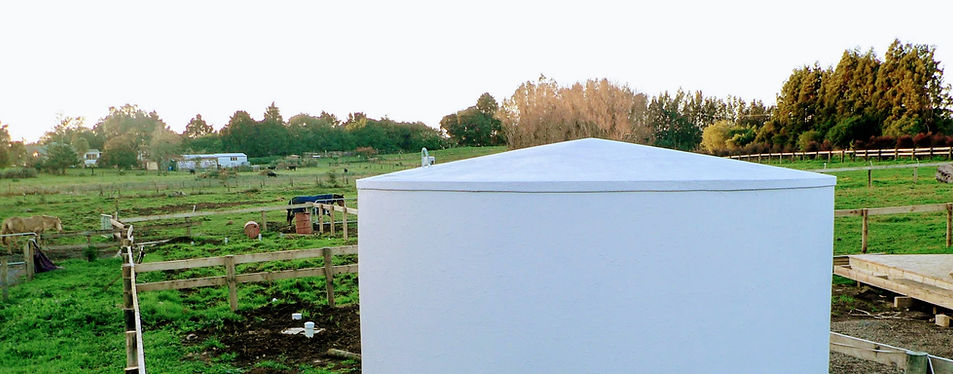
Northland's on-site concrete tank construction company

Why Concrete?
Water Quality:
-
Concrete tanks are known to keep water at cooler temperatures due to the high insulation value of concrete. Water temperature is an important factor contributing to drinking water quality, affecting taste, smell, and bacterial/algal growth. In the Northland region, with our hot and humid summer conditions, considering water temperature is important.
-
Concrete corrects NZ’s natural rainwater acidity. Storing the rainwater in a concrete tank raises the ph of the water due to leaching of lime, removing the acidity. Acidic water can damage plumbing fittings and cause green copper staining on bathroom fittings.
Chemicals & Health Effects:
While all plastic tanks are certified through national, and even international testing standards for food safety, that doesn’t mean you can trust that they are actually good for your health.
Many certification schemes themselves are not robust, and use outdated studies and methods to test for toxicity.
For example, BPA is a well known compound used in plastics that can leech and cause hormone disruption. Recently BPA has fallen out of favour, with many products now being advertised as BPA free. However to maintain product performance, near identical chemicals such as BPS are used instead. These new products have not been as thoroughly tested and their negative effects not as widely publicised or regulated as BPA. Recent studies are showing that they behave very similarly, or perhaps even more detrimentally.
Specialists working in this field (like Leonardo Trasande, director of the division of environmental pediatrics at NYU Langone Health) are concerned with the way chemicals are being tested and regulated in the industry, pushing for chemicals to be regulated by a group or class of chemicals that function similarly.
The exact chemical composition of most commercially available plastics is often hard to come by (owing to the nature of trade secrets), and may consist of 5-30 chemicals/additives that can leach from the product, especially when stressed. Therefore it may be prudent to request from a supplier the full list of chemicals found in the product you plan to store your drinking water in.
For more information on BPA and substitutes, check out this article published by National Geographic, or this study published in the Environmental Health Perspectives scientific journal. And, to understand the complete picture, one should also research the presence/effects of phthalates, flame retardants, and UV stabilisers among others.
Strength & Durability:
-
Empty plastic tanks can fly around in high winds/exposed areas.
-
Concrete tanks withstand fire, and punctures from sharp objects better than plastic tanks.
-
With good maintenance we can guarantee our tanks for ten years, but have known them to last several decades!
Aesthetics:
-
Plastic tanks can't usually be buried more than 500-800mm which means you'll have to live with them or hide them with planting. Our tanks can be engineered for complete burial and even used in retaining functions, and a coat of paint sticks to them no problem.

